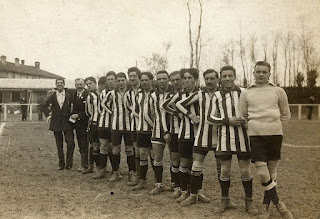Here, the first food outlet you see is an unassuming stall built under an archway leading from the Piazza Mercato delle Scarpe up some steps to the Piazzetta Luigi Angelini, directly opposite the entrance to the station.
PolentOne provides an immediate introduction to cucina bergamasca and is about as far a cry from the ubiquitous kebab shop as is possible to imagine.
As the name suggests, PolentOne’s menu is dominated by polenta, with its versions heralded as the best in the city. Aside from a few panini filled with local meats and cheeses, almost all dishes feature the local cornmeal and buckwheat staple.
The owners clearly have a sense of humour, too. Polentone - meaning polenta-eater - is a term some southern Italians use to describe northerners, and not necessarily in a complimentary way!
PolentOne's dishes follow a simple format - a choice of bramata (plain) or taragna (made with cheese) polenta topped with a range of delicious local specialities.
After a morning’s sight-seeing in the Città Alta, PolentOne is the ideal spot to rest your feet for a quick, tasty and good-value lunch.
My wife and I both opted for the delicious polenta taranga, usually made with Branzi or other Alpine cheeses. I picked the salamella (local salsiccia) as a topping and my wife, the ragù cinghiale (wild boar sauce), each costing just seven euros.
 |
| Polenta served with ragù cinghiale (top) and the local salamella sausage |
The aromas emanating from the kitchen make the wait seem long but in reality it is only five minutes or so. You are presented with steaming hot bowls of polenta taragna. The grilled salsiccia was worthy of a restaurant, while the ragù tasted like it had been simmering for hours despite being served in the time it took to have two sips of wine.
It is a perfect warming lunch - a taste of Bergamo in a bowl for the cost of a drink at a bar.
The next time you arrive in the Città Alta by funicular do not make the mistake of writing off PolentOne as ‘just another station takeaway’. To do so would be a great disservice to a food outlet serving what must be the best polenta in Bergamo.





.jpg)
